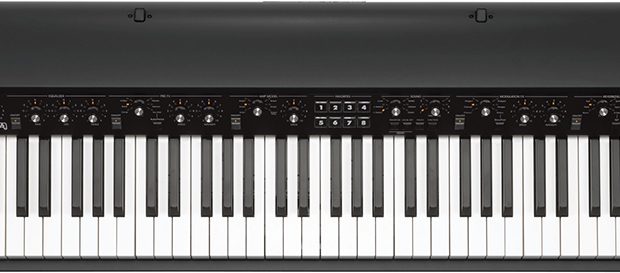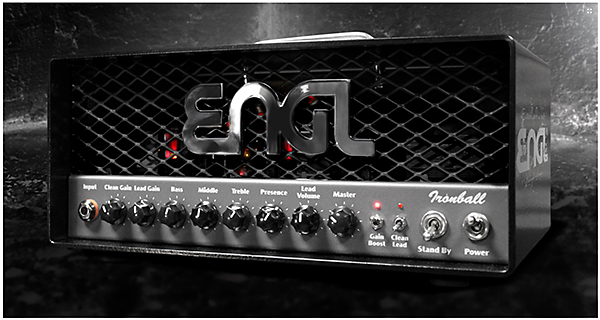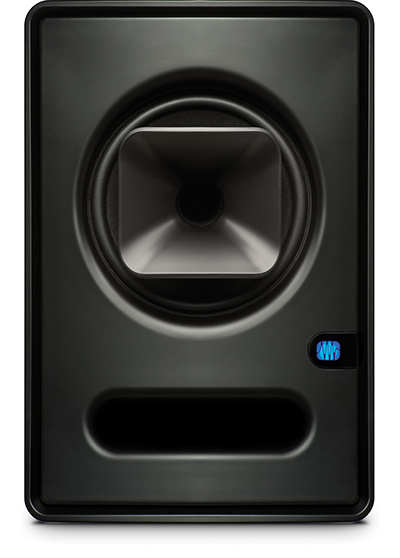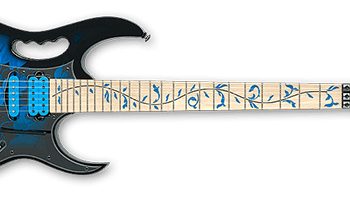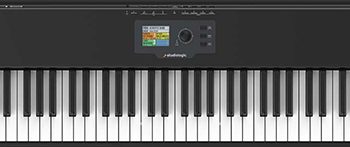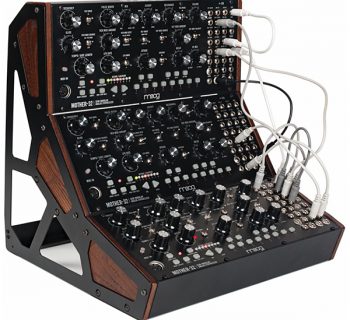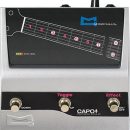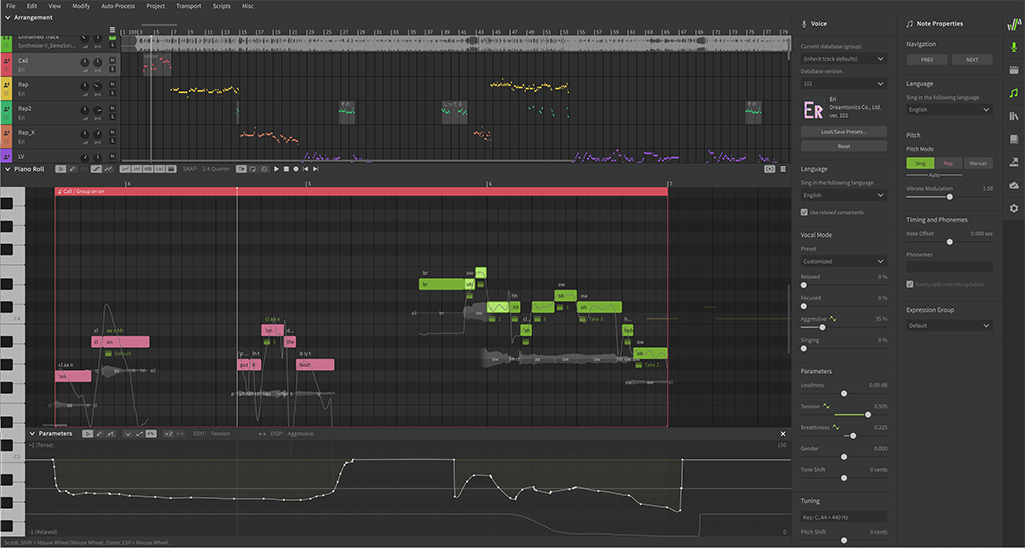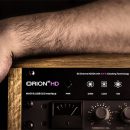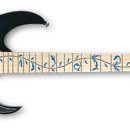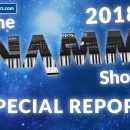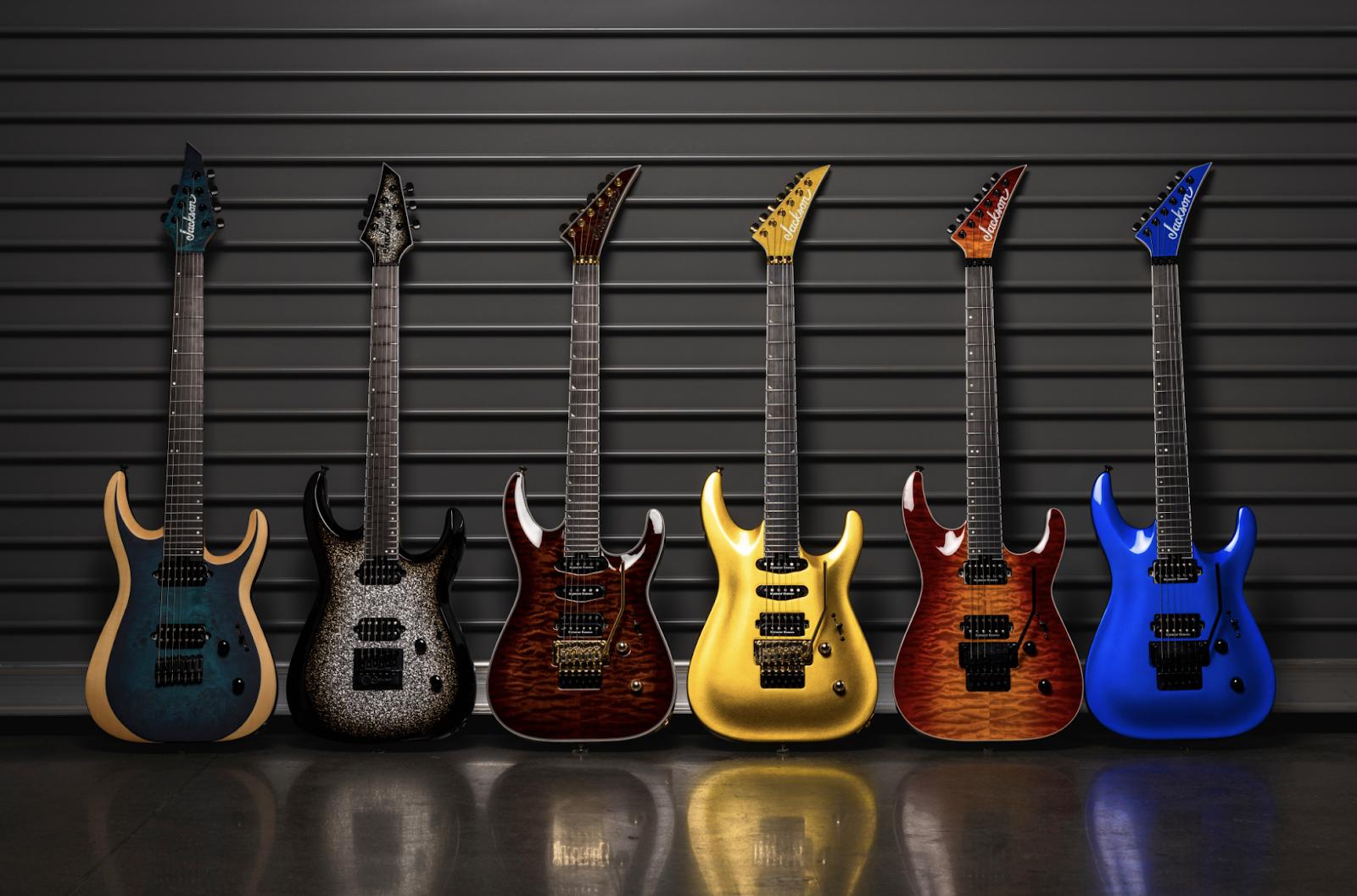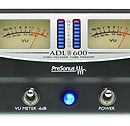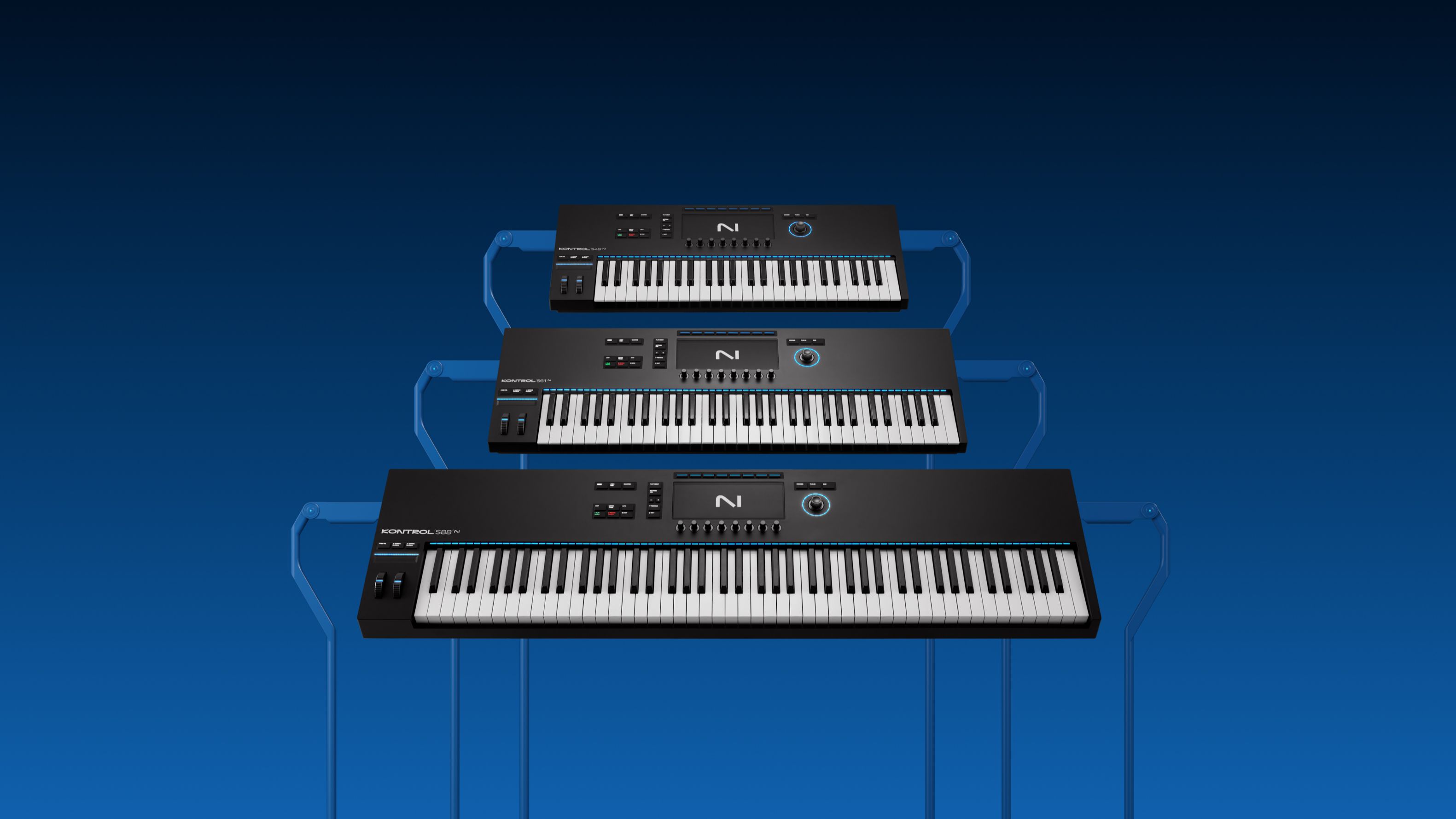This review is a little different than how we typically do things. Usually, we get our toys directly from the manufacturer. In this case, we bypassed that altogether. Artist Matthew Facciolla has been playing some big gigs lately, having opened for Joan Jett, One Republic, and the J. Geils Band all within the past year. Matt called me to do some shows with him (including a 12,000-person show in Sarasota opening for classic rock band, Foghat). Since these would be fly-in dates, Matt supplied a keyboard (after consulting with us first, of course). His style of rock n’ roll falls into the same category as artists like Bruce Springsteen, Tom Petty, and the Doors, so we chose the new Korg SV-1, 73-key version (it comes in 88 as well). The SV-1, as its name implies, is all about vintage stage pianos: Rhodes, Wurlitzer, acoustic piano, organ, with a few other limited number of sounds. This was trial by fire: one full band rehearsal, then some shows. So how did the SV-1 fare?
In short, the SV-1 does some things incredibly well, though it does have some shortcomings that may be a show stopper for some players. In the right situation, however, the SV-1 can be a dream. Read on to finnd out if it is the right stage piano for you.
Features
Our SV-1 had 73 graded-hammer action keys, while a larger 88-note version is also available with the same keyboard feel.
On the far left side of the keyboard is a clear window that lets you peek inside the SV-1. Here, you will find a real 12ax7 tube (with a fake orange glow from backlighting) that is traditionally used to warm up those vintage piano sounds. Perhaps showing it off this way is a little gimmicky, but at the end of the day some of the SV-1’s sounds are really great, so we can live with it. Moving towards the right, there is a master control knob, three-band equalizer, Pre-FX selection knob (this section includes u-vibe, tremolo, compression, boost) with speed and intensity controls; Amp Model section with a knob labeled Amp1-5, and an Organ Amp choice with an accompanying drive selector. We would have liked these amp descriptions to be a little more detailed, but given you can edit things significantly with the included computer-based software, it makes sense these aren’t labeled too specifically.
In the middle of the front panel is the Favorites and Sound sections. The Favorites section is comprised of eight square buttons that you can assign any of the sounds to. For live playing this is great, as you can store eight of your most-used sounds for instant access at the touch of a button without having to go through the various hassles of locating stored presets.
Next to the Favorites buttons is the Sound section. Unlike today’s typical synth or workstation, the SV-1 does not hold thousands of sounds. You get thirty-six. That’s all. No muss, no fuss as they say. These sounds are divided across two knobs with six positions each. The first knob gives you the main categories: clav, e piano1, e piano2, piano, organ, and other. The second knob gives you six variations within each category. While you can only hold thirty-six sounds on board, you can store a library’s worth of sounds in the accompanying computer-based editor/librarian and take your favorites with you to the stage.
Finally, to the left of the sound section is the modulation and effects section. As anyone familiar with vintage keyboards knows, much of the sound was, in part, due to the effects used. The SV-1 has them, and makes use of that tube on the other side of the keyboard. You can choose Phaser 1 and 2, Chorus 1 and 2, Flanger, and slow/fast rotary. You also have fine controls of speed and intensity. Finally, you also have a selection of reverbs including hall, plate, room, spring, tape echo, and stereo delay. You may also set the effect depth via another rotary selector. There is a convenient On/Off switch adjacent to most sections of the control panel to instantly remove effects as needed.
Moving to the back of the SV-1, you’ll find a USB port, three pedal inputs, MIDI In and Out, and a pair of stereo inputs (which do not pass through the effects chain). There are also two pair of stereo outputs: one pair of ¼ inch jacks, and another pair of XLR jacks. This will make your sound crew very, very happy—no direct box needed!
The editor software, as previously mentioned, is available via a free download from the Korg.com website. Given the lack of controls on the SV-1 for sound editing, and no LCD touch screen, etc., to get the most out of the SV-1, and to update it with the latest firmware revision (1.2 as of this review) you’ll certainly want to make use of this handy software.
Usability
Prior to the full band rehearsal we went through the sounds to determine best ones for the show, and the ones we were going to use were easily set as our favorites: it was an easy process of just holding the present button down for a second or two until it accepted the current sound we were on. Program changes were not only seamless—with no pops or noise, but there was nearly instantaneous load time.
The graded-hammer action was great! We have long been fans of Korg’s piano action: we use a Triton Le 88-key piano-action synth as a controller in two of the MusicPlayers.com studios because the key bed feels so good. The SV-1 is one of the few keyboards we have found that equals or surpasses that feel. As always, keyboard feel is very subjective to any given player, but we think most will enjoy the feel of the SV-1.
The gig itself, opening for Foghat, was a little ominous given the rainstorm passing through. Although our product reviews are thorough, we tend to avoid subjecting electronic gear to flood- and electrocution testing. Because of the rain delay, we had to get on and off stage quickly to keep on schedule. When I told the sound crew I had XLR outputs and no direct box was needed, I was received with a big smile and an “Awesome, man!” accolade. We can assure you, keeping the sound crew happy will definitely increase your chances of sounding good!
Given that there are only thirty-six sounds in total, and that this isn’t a monster analog synth with lots of parameters to control, operation is really simple and straightforward. This indeed is what vintage keyboards were all about: a few simple controls, effects of choice, and play. Korg has got this aspect right: do your editing work in the studio, and then live, the keyboard is all about action. Since we selected our sounds for the gig ahead of time, it was painless to press a button and, for example, get my favorite piano sound, then my vox organ sound, and then my Rhodes sound. Some songs had multiple sounds in the same song, and again, it was seamless switching between them.
We also had another gig, opening for the American Vinyl All Star Band (consisting of members of Boston, AC/DC, Steely Dan, Bon Jovi, and The James Brown Band). Prior to this show, we decided to pull out the editing software to see if we could make our SV-1 even better.
Sadly, the area of usability that was not so great was the actual SV-1 editing software. Despite multiple installations and attempts, the software would just not recognize our SV-1! We tried Korg’s own MIDI drivers too, no luck. We tested the SV-1 as a controller for some plugins within Pro Tools and with some standalone programs, and it worked just fine, so it didn’t appear to be a hardware issue. But with our tight schedule, unfortunately there was no time to find a fix. Hopefully we’ll get to investigate the software at a later date and post an addendum or update.
One thing you should know if you’re considering an SV-1: you can’t split presets nor layer them. While there are some loadable samples from Korg that feature split sounds (i.e., a bass and keyboard sound), there’s no way to play two presets at the same time. If you just need a live keyboard with great vintage sounds, this isn’t a deal breaker. But if you wanted to use it for some master controller keyboard functions, the feature set is limited.
Sound
Of course, the most important aspect of the SV-1 is how it sounds. As per Korg, each sound has two aspects: the multi-sample, and a “Real Experience” component. The Real Experience elements are things you’d find in a vintage keyboard: key click, release sounds, and pedal noises. You can adjust the level of these for each sound that employs it, primarily through the editing software.
There are some things that the SV-1 does incredibly well. The acoustic pianos, referred to as Japanese and German (and probably representing Yamaha and Steinway variants) sound great. One of the songs we played required a Vox Continental sound, which also sounded very good. However, we wonder if had we been able to work with the software properly, perhaps very good could have been escalated to great.
By far, our favorite sounds were the Rhodes and Wurli sounds. These were great samples, and with the included effects, really nailed the sound. Korg captured the sound and vibe of these instruments incredibly well: so well, in fact, that I got extra soloing time in the gigs because it sounded so good!
While we didn’t spend a lot of time playing live with them, the clavs and DX7 sounds were solid, and the venerable CP80 piano also sounded very good. We weren’t as happy with the organ sounds overall due to the limited control features on the SV-1.
While the Vox sound was really quite good, the other organ sounds were hit or miss. We don’t mean they sounded bad—they are inherently fine. Given that there are no drawbars on the SV-1, and there are only six sounds to choose from (at any given time live), the organ presets either fit your needs or don’t. We were able to find a good sounding overdriven organ sound that opened our live set nicely (and we even received complements on it after the show), but if you’re looking for a truly versatile organ, there are other keyboards available with more detailed live controls. As long as you pre-plan your set at the computer, though, you should do fine as long as you don’t need real-time drawbar manipulation.
The “Other” selection of sounds are a pretty eclectic collection of random synth sounds, and while fun, strike us as a somewhat odd additions to the SV-1. We admit, we did enjoy the Oberheim “Jump” synth sound, and were even tempted to play “Runaway” when Bon Jovi bassist Hugh MacDonald was around (don’t worry, we didn’t). However, this was more out of nostalgia than the sounds being truly useful. The other sounds include various string and choral samples (including a something resembling a Mellotron). While again, these can be edited with software, and perhaps replaced all together, we thought these sounds paled by comparison to the electromechanical pianos—this keyboard’s forte, and we would have found more organ sounds useful to include instead.
The effects are all high quality, but you need the software editor to get the most out of the SV-1. For example, you can set a limiter via the editor, but there’s no physical control on the SV-1 itself. We hope by the time we have our next gig with the SV-1, our editor issue is fixed, because at the end of the day, we still find this to be a great gigging keyboard.
Documentation and Product Support
The SV-1 has a downloadable manual on Korg’s website, which is (thankfully) fairly straightforward. The software editor also has its own manual, which is easy to digest as well. Given our issue, though, we wish it had more troubleshooting information!
Price
The Korg SV-1 73-key (MSRP $1,829) and SV-1 88-key ($2,069) typically sell for $1,500 and $1,700 respectively. At $1,500 street, you get a great-feeling, 73-key keyboard with some truly stellar vintage sounds. The SV-1’s simple interface is a breath of fresh air in today’s world of complex workstations and synths with analog interfaces: pick your sound, your effects, and play! Although it lacks certain bells and whistles, for the right gigging situation, the SV-1 could be just what the doctor ordered.
Contact Information
Korg
www.korg.com
| Evaluation Short List: |
|

